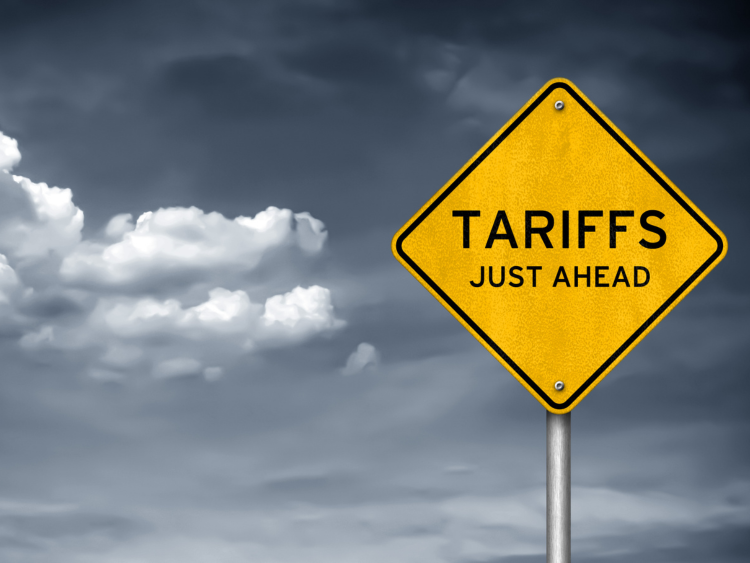Government/Policy
Leibowitz: The President’s 2024 Budget and International Priorities
Written by Lewis Leibowitz
March 12, 2023
The White House recently released the president’s 2024 federal budget proposal. It is a huge document, proposing to spend nearly $7 trillion during the year beginning Oct. 1. That is a significant increase over the FY2023 budget approved by Congress. It even surpasses federal spending during the pandemic in 2020 and 2021. For those oncerned that federal spending is out of control, the document contains is significant evidence to support that concern.

Policy priorities are signaled in the president’s budget proposals. The 2024 document is certainly no exception. Key agencies (USTR, Commerce, Treasury, Homeland Security, Agriculture) released their own budget statements concurrently with the White House proposal. They catalog developments in their spheres, as any competent public relations document will, that extol the virtues of the Biden administration. It is revealing to read about what the administration is proud of.
The US Trade Representative budget fact sheet is a useful example. The budget proposal calls for a modest 3% increase in USTR funding over FY2023. But the listed accomplishments and goals of the next fiscal year give a catalog of what USTR would like to do.
USTR announced six broad goals: (1) opening foreign markets to US exports and combating unfair trade; (2) enforcing US trade laws; (3) developing innovative policies to advance the president’s trade agenda; (4) developing equitable trade policies through inclusive processes; (5) effectively communicating the president’s trade agenda; and (6) achieving organizational excellence as a model employer. In 94 pages the agency promotes its accomplishments and lists its objectives through hundreds of bullet points. These pages are short on detail but filled with stock phrases, such as “diversity, equity and inclusion” and “we can establish a new path forward that supports the global competitiveness of American workers and businesses and further the shared interests of our allies in the years to come.” It is not clear how we get there without embracing mutually beneficial agreements, economically and strategically, with our friends.
I perceived a few basic principles from my admittedly brief review of the document.
First, USTR wants to change the focus of trade policy and trade agreements to do more to reflect the interests of US workers. Does that mean that USTR wants to do less to reflect the interests of US business owners? Does it mean opening US markets and relaxing trade restrictions in exchange for other countries doing the same? If so, that sounds like World Trade Organization (WTO) revisited. But there is scant information on how USTR will remake the mix of interests to achieve a more “worker-centric” result.
Second, it appears USTR thinks it is possible to open foreign markets while not relaxing US import restrictions. That is going to be very difficult. Again, the means to achieve these ends are not revealed.
Third, USTR wants to sell the president’s trade agenda to the public.
The final goal, diversity, equity and inclusion in the USTR workplace, represents a typical agenda for all federal agencies. To some it is self-evident that this is a worthy goal. To others, it may sacrifice excellence and expertise on the altar of equity. We’ll see how that plays out.
Let’s drill down on worker-centric trade policy. It elevates the interests of American workers above something—but what? Workers have jobs and they want to keep them. But the economy is changing fast. Yesterday’s jobs may not be around tomorrow. As the economy moves forward, new jobs will be created. Is it in the US interest to protect infant industries, or to protect existing workers by keeping imports out. Either way, our economy will change—but it could change more slowly that we might want if old jobs are retained past the time when they should go and be replaced by new industries and workers with different skills.
The kind of innovation that is happening all over the world comes largely from the private sector. The current administration believes in government-encouraged (i.e., subsidized) commercial innovation. History shows, however, that government encouragement often has strings attached. The “strings” can actually stifle private sector innovation.
In politics, voters care about the jobs they have. They don’t know the jobs they may have in the future. The USTR budget has a lot to do with selling the agenda to voters. It is natural to expect that they will focus on the advantages to workers who want to keep their jobs. Trade policy that protects existing workers is popular—it usually involves tariffs and restrictions. Policy that gets workers ready for the future is less popular—remember Trade Adjustment Assistance? It expired in 2014.
Government action often steers businesses away from new ways of doing things, especially with foreign partners. Moreover, the money that government spends must be paid for, through taxing or borrowing. The 2024 Biden administration budget calls for $17 trillion in new federal government borrowing over the next 10 years, according to the National Taxpayers Union. More than one-third of the US borrowing will come from foreign governments, based on the current ratio of our national debt already owed to foreigners. That foreign lending means money that could otherwise pay for US exports instead goes toward paying for government spending. Some favor that approach, but innovation and private sector competitiveness could be shortchanged.
And deficit spending will lead to increased trade and current account deficits. The US trade deficit equals the gap between domestic savings and domestic investment. The trade deficit will have to grow if borrowing grows. And, as night follows day, calls for more protectionist trade policies due to “unfair trade” will ensue. But all the protectionism in the world cannot force trade deficits down if foreign borrowing to finance investment continues to increase.
This talk of economics can be tedious but it is necessary. More government involvement in regulating the private sector, including not only traditional regulation but encouraging investment strategies, such as ESG (environment, social, and governance), will lead to less innovation and less economic expansion.
That said, there is no practical way to eliminate government involvement in the economy. The voters want it. And, in some instances, government can bend things in a very positive direction. We should not pretend government does no good. But the amount and direction of government policy needs to be careful—compromise is necessary, as is avoiding serious damage to the US economic engine that is the key to our prosperity.
Judging by the USTR budget blueprint, the administration may be relying too much on government putting its thumb on the scale of the private economy. New policies, no matter how well-intentioned, that compel private industry to do things other than make good products at low prices will render the private economy less energetic and dynamic.
Increasingly, it is evident that we need economic growth and inclusion, which can promote private sector growth, but only if we do it with care.
Lewis Leibowitz
The Law Office of Lewis E. Leibowitz
5335 Wisconsin Avenue, N.W., Suite 440
Washington, D.C. 20015
Phone: (202) 617-2675
Mobile: (202) 250-1551
E-mail: lewis.leibowitz@lellawoffice.com

Lewis Leibowitz
Read more from Lewis LeibowitzLatest in Government/Policy

Price on Trade: The foolishness of free trade with controlled economies
It was only a matter of time before a shutdown happened. And, no, we aren’t talking about the federal government’s lapse in appropriations. On Oct. 9, Beijing announced a series of restrictions that will effectively shut down exports of rare earth elements, magnets, and certain downstream products vital to advanced manufacturing.

Trump pulls plug on trade talks with Canada after anti-tariff Reagan ad
US President Donald Trump took to social media late Thursday night to announce he was canceling trade talks with Canada.

Leibowitz: Renewed trade war with China over rare earths
On Oct.10, President Trump announced major increases in tariffs on Chinese goods. The trigger was a new regime of export controls on rare earth metals and products using those elements, including magnets, capital equipment, and catalysts for catalytic converters in cars and trucks.

Industry piles on new Section 232 steel derivative inclusion requests
The Department of Commerce received 97 submissions from producers, manufacturers, and groups seeking Section 232 tariff coverage for steel and aluminum derivative products.

Price on Trade: New EU steel tariffs don’t mean the US should weaken its stance
Any steel imports into the EU that exceed the new, lower quota level would be subject to a 50% tariff, which represents a major increase from the EU’s current 25% out-of-quota tariff. This move would largely align the EU’s steel tariff rate with Canada and the United States.
